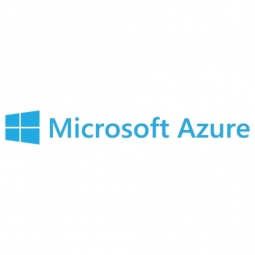下载PDF
Allscripts' Agile Transformation: Leveraging Azure for Cloud Migration
技术
- 应用基础设施与中间件 - 数据库管理和存储
- 基础设施即服务 (IaaS) - 云计算
适用行业
- 医疗保健和医院
- 生命科学
适用功能
- 人力资源
- 产品研发
用例
- 施工管理
- 基础设施检查
服务
- 云规划/设计/实施服务
- 培训
挑战
Allscripts 是一家领先的医疗软件制造商,面临着多项挑战。该公司必须确保其基础设施安全、可用且性能良好,因为其部分客户群使用软件即服务模型使用其产品。 Allscripts 在世界各地维护着六个开发/非托管数据中心,但希望遏制数据中心的无序扩张,并整合和集中这些设施,以降低成本、简化管理并提高安全性。由于孤立的方法引入了不一致的产品部署和支持问题,同步业务的托管和软件开发方面也具有挑战性。 2017 年,Allscripts 收购了两家拥有数据中心资产的公司,这些资产需要快速安置。这两家公司带来了数十个应用程序,而 Allscripts 无处存放它们以及 1,000 多个虚拟机 (VM)。这些应用程序包括旧版本的 Windows Server 和 Microsoft SQL Server 的混合体,它们面临着支持终止的挑战,而其余应用程序则在 Linux 操作系统上运行,这本身也带来了迁移挑战。
关于客户
Allscripts 是一家领先的医疗软件制造商,总部位于伊利诺伊州芝加哥。该公司为医生诊所、医院、健康计划和大型制药公司提供服务。数千家医院、卫生系统、社区诊所和制药公司依靠 Allscripts 软件来提供更智能、更有效的患者护理。该公司生产广泛的软件应用程序,供众多医疗保健参与者使用,以建立开放、互联的健康社区。制药公司使用 Allscripts 软件更有效地进行临床试验。医院和诊所使用其电子健康记录、财务管理和人口健康管理系统。并且,医院和药房使用其电子处方解决方案。通过与付款人、健康计划和项目、制药和生命科学公司以及雇主合作,Allscripts 可以全面了解护理流程,并利用该视角开发创新工具,以降低成本、改善护理并提高患者和提供者的满意度。
解决方案
Allscripts 选择将其新收购的资产重新托管在 Azure 中。该公司的决定受到 Azure 平台的全球数据中心足迹及其重要安全状况的影响,特别是在医疗保健监管合规性方面。使用直接迁移策略,Allscripts 在短短三周内将收购的应用程序重新托管到 Azure 基础架构即服务 (IaaS) 产品(Azure 虚拟机、Azure 存储和 Azure 虚拟网络)。对于其中一家被收购的公司,Allscripts 使用 Azure Site Recovery 将本地 VM 复制到 Azure,然后将 VM 从主站点故障转移到 Azure 数据中心。对于无法迁移到 Azure 的系统,Allscripts 将其迁移到 Allscripts 数据中心,并以混合方式在该数据中心和 Azure 数据中心之间设置 VPN。在第二次收购中,Allscripts 利用了 Azure 混合权益,该优惠允许客户在 Azure 中重复使用现有的本地 Windows Server 和 SQL Server 许可证,并实现高达 82% 的许可节省。
运营影响
数量效益
相关案例.

Case Study
Hospital Inventory Management
The hospital supply chain team is responsible for ensuring that the right medical supplies are readily available to clinicians when and where needed, and to do so in the most efficient manner possible. However, many of the systems and processes in use at the cancer center for supply chain management were not best suited to support these goals. Barcoding technology, a commonly used method for inventory management of medical supplies, is labor intensive, time consuming, does not provide real-time visibility into inventory levels and can be prone to error. Consequently, the lack of accurate and real-time visibility into inventory levels across multiple supply rooms in multiple hospital facilities creates additional inefficiency in the system causing over-ordering, hoarding, and wasted supplies. Other sources of waste and cost were also identified as candidates for improvement. Existing systems and processes did not provide adequate security for high-cost inventory within the hospital, which was another driver of cost. A lack of visibility into expiration dates for supplies resulted in supplies being wasted due to past expiry dates. Storage of supplies was also a key consideration given the location of the cancer center’s facilities in a dense urban setting, where space is always at a premium. In order to address the challenges outlined above, the hospital sought a solution that would provide real-time inventory information with high levels of accuracy, reduce the level of manual effort required and enable data driven decision making to ensure that the right supplies were readily available to clinicians in the right location at the right time.

Case Study
Gas Pipeline Monitoring System for Hospitals
This system integrator focuses on providing centralized gas pipeline monitoring systems for hospitals. The service they provide makes it possible for hospitals to reduce both maintenance and labor costs. Since hospitals may not have an existing network suitable for this type of system, GPRS communication provides an easy and ready-to-use solution for remote, distributed monitoring systems System Requirements - GPRS communication - Seamless connection with SCADA software - Simple, front-end control capability - Expandable I/O channels - Combine AI, DI, and DO channels

Case Study
Driving Digital Transformations for Vitro Diagnostic Medical Devices
Diagnostic devices play a vital role in helping to improve healthcare delivery. In fact, an estimated 60 percent of the world’s medical decisions are made with support from in vitrodiagnostics (IVD) solutions, such as those provided by Roche Diagnostics, an industry leader. As the demand for medical diagnostic services grows rapidly in hospitals and clinics across China, so does the market for IVD solutions. In addition, the typically high cost of these diagnostic devices means that comprehensive post-sales services are needed. Wanteed to improve three portions of thr IVD:1. Remotely monitor and manage IVD devices as fixed assets.2. Optimizing device availability with predictive maintenance.3. Recommending the best IVD solution for a customer’s needs.

Case Study
HaemoCloud Global Blood Management System
1) Deliver a connected digital product system to protect and increase the differentiated value of Haemonetics blood and plasma solutions. 2) Improve patient outcomes by increasing the efficiency of blood supply flows. 3) Navigate and satisfy a complex web of global regulatory compliance requirements. 4) Reduce costly and labor-intensive maintenance procedures.

Case Study
Harnessing real-time data to give a holistic picture of patient health
Every day, vast quantities of data are collected about patients as they pass through health service organizations—from operational data such as treatment history and medications to physiological data captured by medical devices. The insights hidden within this treasure trove of data can be used to support more personalized treatments, more accurate diagnosis and more advanced preparative care. But since the information is generated faster than most organizations can consume it, unlocking the power of this big data can be a struggle. This type of predictive approach not only improves patient care—it also helps to reduce costs, because in the healthcare industry, prevention is almost always more cost-effective than treatment. However, collecting, analyzing and presenting these data-streams in a way that clinicians can easily understand can pose a significant technical challenge.






